The BMW M1 is honestly one of the most fascinating—and tragic—stories in the world of cars. This mid-engine supercar was BMW’s bold shot at building the ultimate racing machine and conquering the World Championship of Makes in the wild 1970s.
The M1 was BMW’s boldest expression of automotive art, designed specifically to win races, but it landed smack in the middle of a motorsport mess. Timing, as they say, is everything, right?
Jochen Neerpasch, BMW Motorsports chief with a knack for shaking things up, kicked off the M1 project in 1975. He wanted to replace the aging 3.0 CSL coupe and, honestly, who could blame him?
The plan sounded flawless: crank out 400 road cars for homologation, then unleash a turbocharged monster for Group 4 racing. But then came the delays, financial headaches with partners, and racing rule changes—turning a sure win into a pretty expensive letdown.
Even so, the M1 somehow became unforgettable and set the stage for BMW’s legendary M division. Only 453 units rolled out from 1978 to 1981, making this rare beast a blend of Giugiaro’s jaw-dropping design, a detuned race engine with 266 horses, and handling that could make Ferrari sweat.
Origins and Development
The BMW M1 sprang from BMW’s urge to shake up Group 4 racing and make a splash in the supercar scene. Racing dreams, mid-engine innovation, and complicated cross-border partnerships—this car’s backstory is a drama all its own.
Motivation Behind the BMW M1 Project
Back in 1975, BMW faced a racing crossroads. The 3.0 CSL coupe, once a champ, was starting to look a little tired under new Group 4 rules.
Jochen Neerpasch—the guy who basically invented BMW Motorsports GmbH—jumped in to lead the charge. His racing division had already made the 3.0 CSL a legend in touring car circles.
The name “M1” was no accident. “M” meant serious business at BMW, and “1” marked this as a historic first.
Homologation rules were the whole reason for the M1’s existence. BMW needed 400 production cars to race, so they set out to build street versions first and then cook up a turbocharged variant for the track.
Key Inspirations and Early Concepts
The M1’s roots go back to the 1972 BMW Turbo show car by Paul Bracq. That wild concept had a mid-mounted turbocharged four-cylinder—pretty daring for its day.
BMW didn’t jump on the mid-engine bandwagon right away. They shelved the idea at first, focusing on sedans, but the concept came roaring back when racing ambitions heated up.
Giugiaro and his Ital Design crew got the nod for the production design. The M1 would be BMW’s first mid-engined production car—a title it held until the i8 showed up decades later.
Internally, they called it E26. The plan was to take the proven CSL engine, wrap it in a lightweight, aerodynamic shell, and make it a weapon both on the road and the track.
Lamborghini Collaboration and Project Challenges
BMW teamed up with Lambohttps://www.lamborghini.com/en-en#val-htrghini to build 400 M1s for racing homologation. On paper, it looked like a dream partnership.
But then the money troubles hit. Lamborghini’s financial meltdown pushed production way past the 1977 deadline. BMW scrambled to keep a toe in racing by developing the 320i for Group 5.
The M1 got its official debut in January 1978, but the drama wasn’t over. Lamborghini was teetering on bankruptcy, so BMW pulled the plug on the contract in April that year.
Suddenly, BMW had to patch together a new manufacturing plan. Marchesi built the frame, TIR handled the fiberglass, and Ital Design assembled the puzzle. Baur in Stuttgart dropped in the BMW bits, and BMW Motorsports in Munich gave each car its final polish.
Debut and Public Reaction
After all that chaos, the M1 finally hit the streets in 1979. It showed up alongside the wild Procar series, where F1 drivers and privateers duked it out in identical M1s.
People were excited, but the car had its share of growing pains. The Procar series delivered some wild racing, but engine gremlins made headlines and dented the M1’s street cred.
Major races like Watkins Glen and Le Mans didn’t help, either. The Group 4 version never quite lived up to the hype, and turbo development was slow going.
By December 1980, production wrapped up at just 430 cars. Even so, the automotive press couldn’t help but admire the M1’s technical chops and forward-thinking design.
Design and Engineering Team
The BMW M1’s creation pulled together some of Europe’s sharpest minds. Jochen Neerpasch led the Motorsport vision, and Giorgetto Giugiaro penned the unforgettable shape. It took a small army of specialized companies to actually build the thing.
Role of Jochen Neerpasch and BMW Motorsport
Neerpasch was the spark behind the M1. He wanted a mid-engine supercar that could mix it up in Group 5 racing, not just follow the crowd.
He knew BMW had to go mid-engine to beat the competition—front-engine setups just weren’t cutting it anymore. That’s some real vision.
He also brought in Paul Rosche, who would later design the McLaren F1’s V12, to create the M88/1 powerplant for the M1. Talk about stacking your team with talent.
When the original racing plans fizzled, Neerpasch didn’t give up—he helped launch the Procar series, where the top five F1 qualifiers faced off against privateers in identical M1s. That’s the kind of pivot you have to respect.
Giorgetto Giugiaro and Italdesign
Giorgetto Giugiaro and Italdesign shaped the M1’s look. Giugiaro’s knack for sharp, futuristic lines gave the car its unmistakable wedge stance.
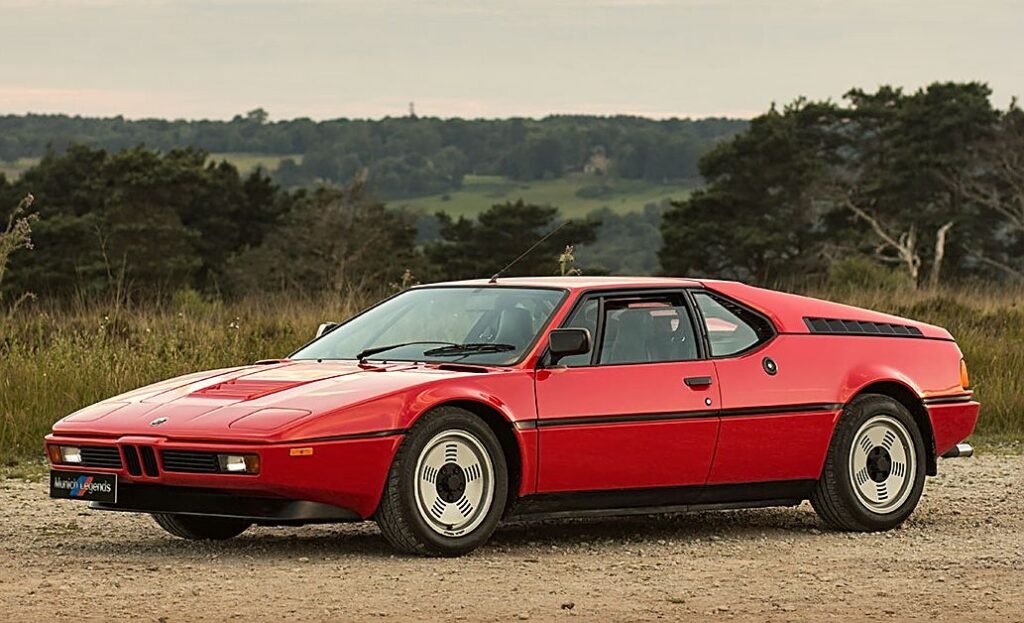
He didn’t just make it pretty—he designed a body that worked as well as it looked. Italdesign also handled the tricky job of assembling the frame and body before dropping in the interior.
Giugiaro’s a legend for a reason. The M1 proves he could blend real aerodynamics with head-turning style.
Chassis and Assembly Partners
Building the M1 was like conducting a European orchestra—every company played its part. Here’s the lineup:
- Marchesi: Built the tubular steel spaceframe chassis
- TIR: Molded the fiberglass body panels
- Italdesign: Assembled frame, body, and interior
- Baur: Installed the engine and transmission in Stuttgart
- BMW M Division: Final assembly and quality checks
Italengineering, started by ex-Lamborghini engineers, swooped in to finish the car’s engineering after the Lamborghini partnership fell apart.
But wow, what a logistical headache. The M1 bounced between Italy and Germany multiple times during assembly, which naturally drove up costs and complexity.
Behind-the-Scenes Stories
The M1 saga is full of plot twists. Lamborghini was supposed to build all 400 cars, but their financial collapse forced BMW to scramble for new partners.
That disaster set production back and sent costs soaring. The M1 was still a work-in-progress when Lamborghini bowed out, so Italengineering had to step in and save the day.
Quality control was a constant battle, thanks to the complex, multi-company assembly. But despite all the headaches, the team pushed through and delivered what many call BMW’s first real supercar. If that’s not European collaboration at its most dramatic, what is?
Engine, Performance, and Driving Experience
The BMW M1’s soul was its naturally aspirated M88 engine—277 horsepower of pure, old-school excitement. With advanced fuel injection, this mid-engine marvel delivered driving dynamics that wowed journalists and owners alike. It was balanced, raw, and had a personality all its own.
M88 Engine and Technical Innovations
The M88 straight-six sat at the heart of the M1’s performance. BMW built this 3.5-litre, naturally aspirated beast with racing in mind from the start.
Key Technical Specs:
- Displacement: 3,453 cc
- Configuration: Inline-6, dual overhead cams
- Power: 277 hp at 6,500 rpm
- Torque: 243 lb-ft at 5,000 rpm
Instead of old-school carbs, the M1 ran mechanical fuel injection. The Kugelfischer system gave it sharper throttle response and more precise fueling—pretty high-tech for the late ‘70s.
A Magneti-Marelli ignition system handled spark timing, bringing in electronic precision. That combo of mechanical injection and electronic ignition? Cutting-edge stuff back then.
The M88 loved to rev and delivered its power in a smooth, linear rush. BMW engineers tucked the engine behind the driver, giving the M1 that true mid-engine balance that made it feel alive in the corners.
Performance Figures and Capabilities
Let’s talk numbers. The M1’s performance stats really show off its focused engineering.
Back in 1978, this car could rocket from 0-60 mph in about 5.5 seconds, hell, that’s quick even by today’s standards, but back then? It was wild.
Performance Metrics:
- Top Speed: 162 mph
- 0-60 mph: 5.5 seconds
- Quarter Mile: 13.8 seconds
- Power-to-Weight Ratio: 8.8 lbs/hp
You’d row through a five-speed manual, sending power to the rear wheels via a limited-slip diff. That combo gave drivers loads of traction and a real sense of control.
BMW skipped turbocharging for the M1. Instead, the naturally aspirated M88 engine delivered sharp throttle response and power that felt honest, smooth, and predictable.
The mid-engine setup brought a near-perfect 43/57 front-to-rear weight split. That balance? It’s a huge part of why the car feels so planted and stable in corners.
Test Drives, Media Impressions, and Owner Reviews
When journalists first got their hands on the M1, they couldn’t stop raving about its driving feel and engine refinement. Road & Track, for example, loved the car’s poise and the way the steering seemed to read your mind.
Motor Trend called out the engine’s silky power delivery and that unmistakable exhaust howl. No turbo lag—just pure, linear acceleration, which feels like a breath of fresh air if you’ve ever driven a laggy turbo from that era.
Common Praise Points:
- Rock-solid build quality
- Engine that just begs to rev
- Handling that feels like telepathy
- Exhaust note you’ll never forget
Owners often say the M1 is way more livable than its Italian rivals. You get the thrills, but with that signature German reliability and day-to-day usability.
Visibility and ergonomics? Surprisingly good, considering the mid-engine layout. BMW managed to keep the cabin comfortable without sacrificing the car’s racy vibe.
Long-term owners swear by the M88’s durability, as long as you keep up with maintenance. Sure, the mechanical fuel injection needs a bit of know-how, but it rewards you with decades of consistent performance.
Exterior, Interior, and Aerodynamics
The BMW M1’s looks? Pure Giugiaro—sharp, angular lines and a shape that screams “race car.” Inside, it’s all about the driver, not luxury trimmings. Every curve and vent on the outside isn’t just for show—it’s there to slice through the air and keep things cool at 160 mph.
Styling Influences and Bodywork
Giorgetto Giugiaro at Italdesign penned the M1’s unforgettable wedge profile. If you’ve seen the BMW Turbo concept, you’ll recognize those crisp lines and purposeful stance.
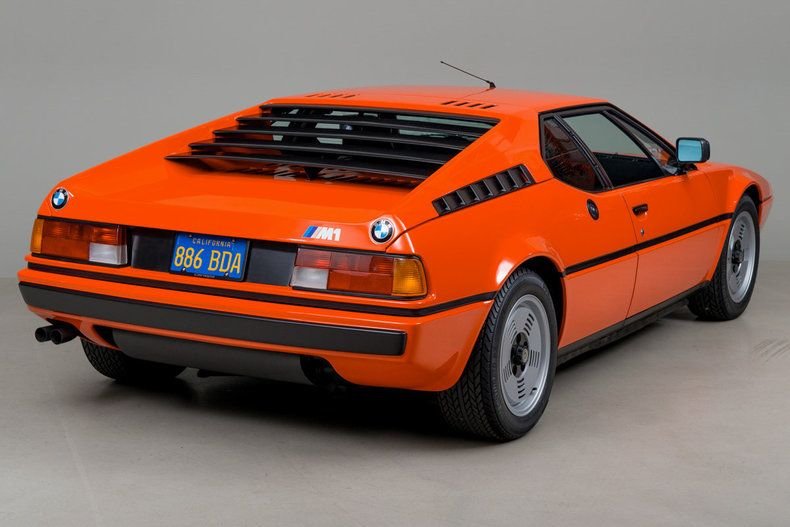
BMW used fiberglass for the body to keep things light. The result? A car that looked nothing like your typical BMW sedan—this thing was all drama and angles.
Key Design Elements:
- Wedge nose with pop-up headlights
- Side air intakes just behind the doors
- Signature rear spoiler
- Windows with serious attitude
- Wheel arches that mean business
The Turbo show car even had rear wheel skirts for lower drag, but those didn’t make it to production. Sometimes practicality wins out.
Giugiaro managed to blend aggression with just enough restraint. The M1 looks exotic, but not like it’s trying too hard—almost like it knows it’s special and doesn’t need to shout.
Cockpit Layout and Driver Comfort

Inside, the M1 doesn’t bother with frills. Every switch and dial sits right where you need it—no distractions, just business.
The dashboard keeps things simple and echoes the sharp exterior. It’s mostly black plastic, with barely any chrome or wood to break things up.
Interior Features:
- Bucket seats that actually hug you
- Three-spoke steering wheel—classic
- Analog gauges, because who needs digital?
- Manual shifter with a solid, mechanical feel
- Just-the-basics climate controls
You sit low, with a commanding view forward. Rearward vision? Not so much, thanks to that mid-engine setup and tiny rear window. But hey, you can’t have it all.
Storage? Almost nonexistent. BMW clearly decided performance mattered more than bringing your golf clubs along. Materials get the job done, but don’t expect luxury—this car’s all about the drive.
Aerodynamic Features
The M1’s shape isn’t just for show. Every curve and vent is there for a reason: to keep the car planted and cool at speed.
The front air dam channels air around the body and feeds the brakes. Meanwhile, those side vents gulp air for the mid-mounted engine.
Aerodynamic Elements:
- Front spoiler that means business
- Side intakes for the hungry engine
- Rear deck spoiler—subtle but effective
- Flat underbody panels
- Glass that sits flush for less drag
The rear spoiler looks tame compared to what came later, but it does the job. The drag coefficient? Pretty competitive for its day.
Race versions cranked things up with bigger splitters, side skirts, and wings. It’s like the M1 put on a superhero costume for the track.
Racing Heritage, Variants, and Notable Achievements
If the M1 had a true calling, it was on the racetrack. The Procar series put it center stage at Formula 1 weekends, while Group 4 and Group 5 versions tore up circuits across Europe. BMW’s motorsport cred? The M1 helped write that story.
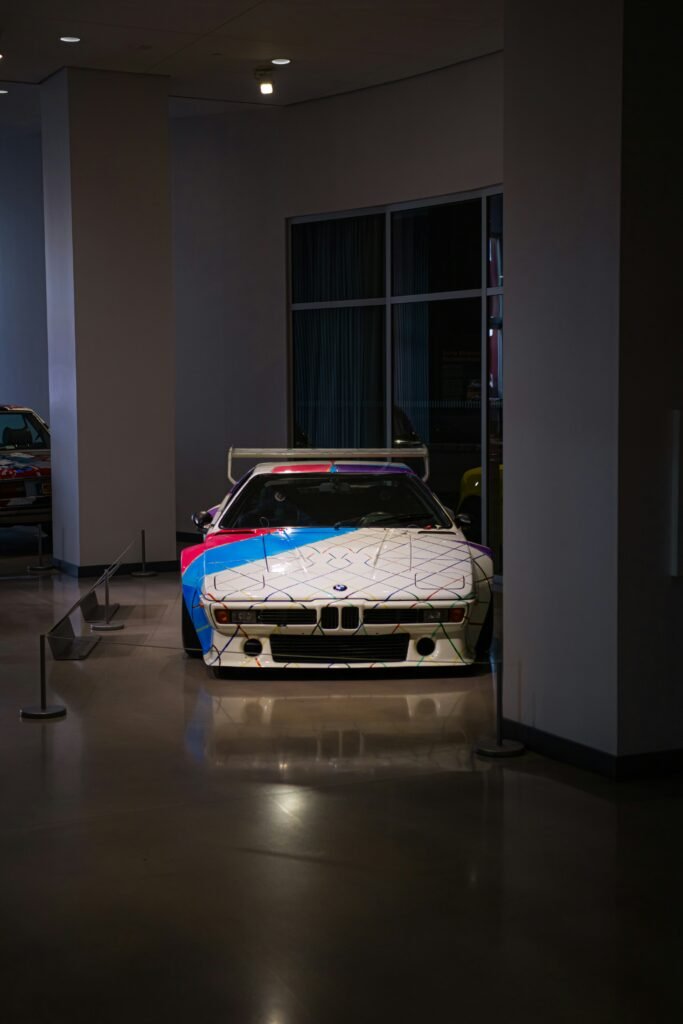
Procar Series and Formula 1 Involvement
The Procar BMW M1 Championship kicked off in 1979, running as a support series for F1. Imagine identical M1s battling it out at places like Monaco and Silverstone—pure drama.
Nelson Piquet absolutely owned the first season, taking the title with his aggressive, fearless style. The grid featured F1 legends like Niki Lauda and Jacques Laffite, mixing it up with M1 specialists.
The Procar series only lasted two seasons, ending in 1980, and that’s because Money and logistics got in the way, but the series proved the M1 could hang with the best on a global stage.
Procar M1s packed about 470 horsepower from their tweaked 3.5-liter sixes. They got aero upgrades, roll cages, and stiffer suspension—basically, everything you’d want for serious racing.
Group 4, Group 5, and Group B Rally Competitions
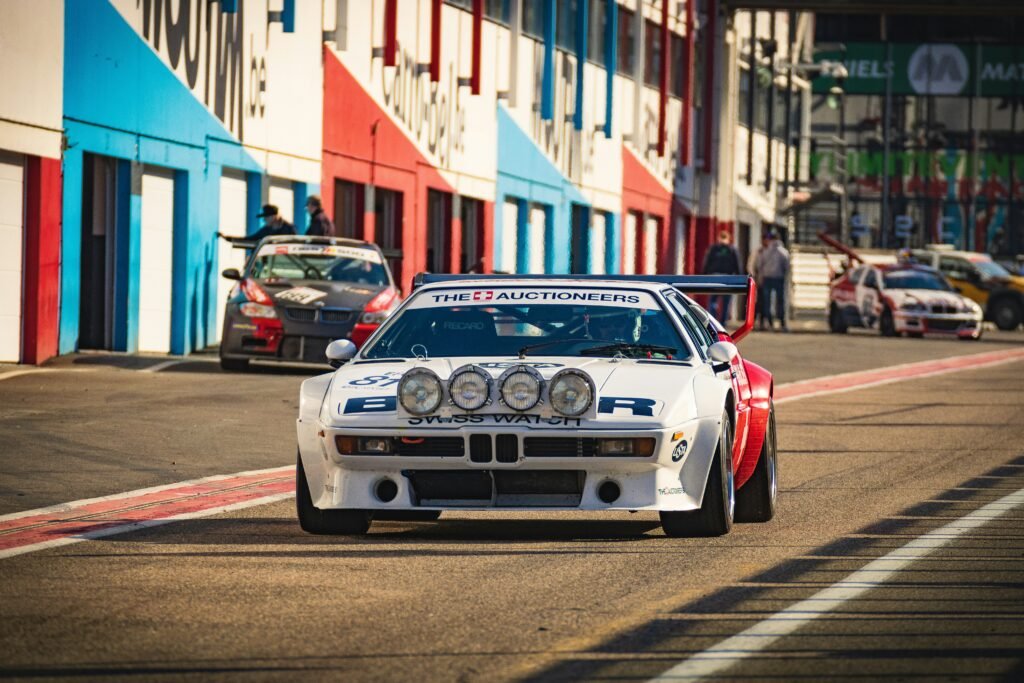
The M1 wasn’t just a one-trick pony. It raced in Group 4 and Group 5 through the early ‘80s, with BMW pushing the envelope on power and bodywork.
Group 4 M1s ran in the World Championship for Makes, picking up wins at tracks like Silverstone and the Nürburgring. They kept the basic M1 look but added racing tweaks and safety gear.
Group 5 versions looked wild—huge wings, big splitters, and more power (over 600 hp!). These “silhouette” racers battled in the German DRM series, going head-to-head with some serious hardware.
BMW even tried the M1 in Group B rally (yeah, really) at events like the Rallye de la Baule. Bernard Béguin gave it a shot, but let’s be honest: a mid-engine supercar on gravel is a bit like bringing a scalpel to a lumberjack contest.
Notable Lap Records and Awards
The M1’s racing record did wonders for BMW’s rep. It proved the brand could build a car that wasn’t just fast, but tough and reliable, too. That’s how legends are made.
Key Racing Achievements:
- Multiple DRM (German Racing Championship) wins
- Class victories in European endurance races
- Lap times that kept Porsche and Ford honest
- Strong showings in IMSA GT events
Drivers loved the M1’s balance and composure at the limit. It just felt right, even when pushed to the edge.
On track, the M1 could mix it up with heavy hitters like the Porsche 935 and Ford Capri Zakspeed and that’s no small feat.
Special Editions and Motorsport Variants
BMW didn’t stop at one version. There were road cars, Procar racers, Group 4 and Group 5 monsters, and even some wild art cars. Each had its own flavor and purpose.
Racing Variants:
- Road Car: 273 hp, legal for the street
- Procar: 470 hp, built for the single-make series
- Group 4: GT racing upgrades
- Group 5: Radical silhouette racer
- Art Car: Rolling masterpieces by artists
The most extreme versions barely resembled the original. Think huge wings, wild bodywork, and engines tuned to the moon—these were pure race machines.
BMW only made 453 M1s in total, so every single one is a unicorn. The rarest racing versions? They’re collector gold, and Procar examples are especially prized.
Oh, and Andy Warhol painted one for the Art Car project. That car’s become a pop culture icon, proof that the M1’s influence goes way beyond the track.
Community, Market Value, and Cultural Impact
The BMW M1 has a cult following, pulling in a very specific kind of collector. Prices have gone through the roof, thanks to its rarity and motorsport pedigree. It’s no stretch to say the M1 shaped BMW’s performance image and set the bar for what a German supercar could be.
Owner Demographic and Enthusiast Community
M1 owners? They’re usually seasoned collectors with a deep love for cars. Most have a few classics in the garage and know exactly why the M1 matters.
This isn’t a car for casual buyers. Owners tend to be over 40, successful, and often have a motorsport or engineering background. There’s a sense of pride and exclusivity that comes with M1 ownership.
The M1 community is tight-knit:
- BMW M1 Registry keeps tabs on every known car
- Annual meetups at Concours events
- Forums buzzing with restoration tips and stories
- Clubs in Europe hosting track days and road trips
With only 456 road cars built, the group is small—most owners know each other by name. It’s a family, really, united by a shared obsession.
Competitor Cars and Market Context
The M1 went head-to-head with the Lamborghini Silhouette and Ferrari 308 GTB in the late ’70s. Seriously, it was German engineering versus Italian drama—what a clash.
Performance-wise, the M1 didn’t just show up, it made a statement:
- 0-60 mph: 5.5 seconds. That’s right up there with Lamborghini.
- Top speed: 162 mph. Ferrari fans couldn’t brag much faster.
- Handling: That mid-engine setup? Gave it killer balance and poise.
But here’s the thing: the M1’s trump card was always reliability. Italian exotics had their charm, but often left owners stranded with electrical gremlins or shoddy build. The M1 just kept running. Maybe that’s why collectors still chase them down today.
People sometimes compare it to the BMW i8, calling that car BMW’s mid-engine comeback. But honestly, the i8’s hybrid tech and sci-fi looks put it in a totally different lane. The M1 was pure motorsport ambition—no filters.
Price History and Collector Interest
Prices for the M1? Wow, they’ve skyrocketed. Back in the ’90s, you could snag one for $50,000-$80,000. Now?Expect to shell out $400,000-$600,000 for a solid example.
What drives the price? A handful of things:
- Condition: If the car’s pristine, don’t be shocked by $700,000+ tags.
- Provenance: Racing history? That’ll boost value, no question.
- Originality: Matching numbers are the holy grail here.
- Documentation: Full service records? Collectors eat that up.
Sure, the 2008 financial mess knocked prices down for a minute. But honestly, the M1 bounced back fast—rarity and pedigree just don’t go out of style.
Right now, the market’s still hot. Younger collectors seem to love the M1’s racing DNA and bold looks. And let’s face it, there aren’t many out there, so demand keeps climbing.
Big auction houses—think Barrett-Jackson or RM Sotheby’s—keep putting M1s in the spotlight. These events crank up the hype and, yeah, validate those eye-watering prices.
Brand Impact and Lasting Legacy
The M1 didn’t just roll off the line—it crashed right through the barriers of what folks expected from BMW. Suddenly, the brand had street cred in the supercar world, even though they built only a handful. That was gutsy. BMW showed everyone they could build wild, mid-engined machines that actually stood up to the best from Italy.
Design influence from the M1? Oh, you can spot it all over BMW’s lineup these days.
- Those sharp, angular body lines? They’re still alive and kicking in the latest M models.
- BMW took the M1’s aerodynamic tricks and made them a company-wide obsession.
- The interior layout—yeah, you’ll see echoes of the M1’s cockpit in every serious BMW sports car since.
The M1 didn’t just look fast—it raced, and it won. Group 5 victories weren’t just trophies; they proved BMW’s engineers had the chops. That racing pedigree? It gave the whole brand a swagger it never really lost.
BMW Group’s cultural engagement loves to show off the M1 as a true design icon. You’ll spot it in museum halls and brand showcases all over the globe. Honestly, it’s almost like a piece of rolling art.
Modern BMW ads love to drop hints about the M1’s legacy. Its influence? It’s not just for car nerds. The M1 broke through into pop culture, standing tall as one of the late ’70s’ true design milestones.
Final Words
The BMW M1 was the foundation of BMW’s M division—a car built not just for speed, but for precision on corners, asphalt, and even dirt. Whether or not you’re a fan of today’s M cars, it’s important to remember that the M division was born to push automotive boundaries. That relentless pursuit of performance is exactly why we fell in love with M cars in the first place.
Thanks for reading! If you enjoyed this deep dive, be sure to subscribe to my email list for exclusive car reviews, insider tips, and weekly special offers on car parts, auctions, and gear — perfect for any car enthusiast.
If you have any thoughts or experiences with this car? Leave a comment below — I love hearing your opinions and sparking conversations with fellow enthusiasts.
And don’t forget to read related posts for more great content!


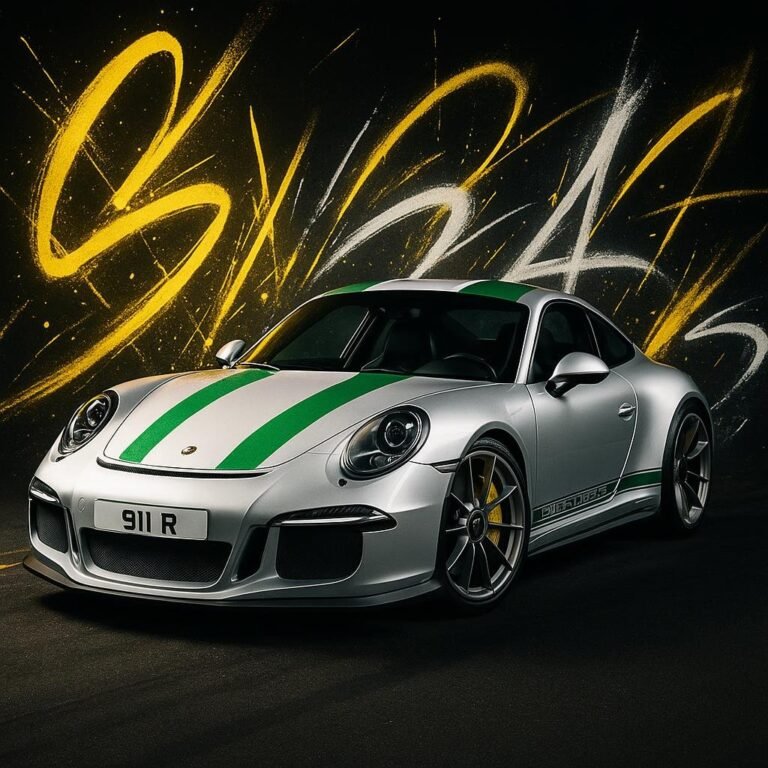

[…] one of the boldest comeback attempts ever. This electric sports car was supposed to bring the DeLorean name roaring back after 40 years in the […]
[…] what really makes limited edition cars go from “cool” to “goldmine”? Performance, emotional design appeal, and historical importance—that’s the magic formula for classic limited edition cars […]
[…] in the mid-1980s, Ferrari set out to create the ultimate road car. They wanted a machine that captured the raw, unfiltered essence of racing, all while celebrating […]
[…] body looked almost unchanged from decades ago—timelessness in metal and leather. That classic silhouette is what made the Plus 8 so beloved for half a […]